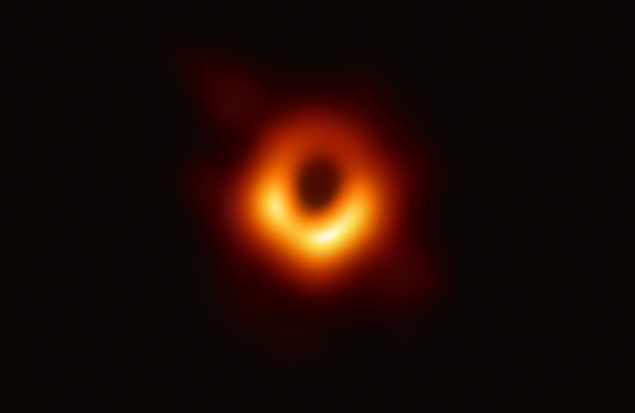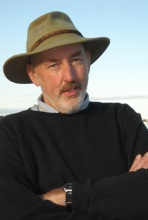The first-ever photo of a black hole is a really big deal
Physicist John Wardle, who was part of the team that produced the image, explains why it's a major scientific breakthrough.
 Credit: Event Horizon Telescope Collaboration
Credit: Event Horizon Telescope CollaborationScientists have obtained the first image of a black hole, using Event Horizon Telescope observations of the center of the galaxy M87. The image shows a bright ring formed as light bends in the intense gravity around a black hole that is 6.5 billion times more massive than the Sun.
In a historic breakthrough, an international team of scientists has announced that they’ve captured the first-ever image of a black hole. (For more, see Event Horizon Telescope website.)
The black hole lies at the center of the Messier 87 (M87), a giant elliptical galaxy located 55 million light-years from Earth in the center of the Virgo cluster of galaxies.
The image shows clearly the expected “shadow” of the black hole against the glow of orbiting hot gas. The shadow can be thought of as a magnified image of the event horizon, which is the point of no return for gas falling into the hole. The size of the shadow allows us to determine the mass of the black hole as 6.5-billion times that of the Sun.
The Event Horizon Telescope (EHT) Collaboration, as the research project is called, involved more than 200 scientists. They obtained the black hole image by networking together radio telescopes at six locations across the globe, effectively creating a "virtual telescope" with unprecedented sensitivity and resolution.

John Wardle
Professor of astrophysics John Wardle, an expert on radio astronomy, serves on four of the EHT’s 23 working groups. He helps analyze the polarization of the M87 black hole’s radio emissions, which will enable the researchers to study the black hole’s surrounding magnetic fields. He also serves on the publication working group which shepherded papers through the writing, reviewing and publication process.
Simultaneously with Wednesday’s announcement, six papers detailing the work of the collaboration will be published. These will also be posted on the EHT website.
BrandeisNOW asked Wardle about the significance of the EHT’s findings.
BNOW: The black hole actually turns out to look like scientists predicted. Is that a bit disappointing?
WARDLE: I don’t know if I am happy or sad. It is always exciting to discover a completely new and unexpected effect that keeps the theoreticians up at night, but it is also very satisfying when what you expected turns out to be precisely true. That makes you feel that you really do understand some small part of our universe.
BNOW: The image of the M87 black hole is said to confirm predictions made by Einstein’s theory of general relativity (GR). Hadn’t this theory already been proven?
WARDLE: Until recently, GR had only been tested within our solar system, where the differences between Einstein’s gravity and Newton’s gravity are small and hard to measure. This observation is a test of “strong gravity,” where the differences are large and observable.
The first test of strong gravity was the Laser Interferometer Gravitational-Wave Observatory’s (LIGO) observation of gravitational radiation from two colliding and merging black holes. That tested the dynamical behavior of GR. The EHT tests the underlying static gravitational field predicted by GR for an isolated black hole. GR passes both tests with flying colors.
BNOW: So Einstein really was the genius everyone thinks.
WARDLE: What is extraordinary is that GR, first published 100 years ago, appears to be an exactly correct description of the physical world we live in, whatever tests we subject it to. I can’t think of another physical theory that has lasted so long and so successfully.
Read more about Wardle and the EHT collaboration.
Categories: Research, Science and Technology





